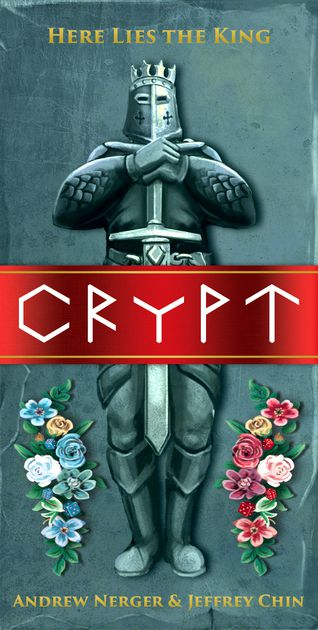 What is this game about? Crypt is a game about reclaiming family heirlooms—treasures that your deceased father promised to leave to you, but took to the grave instead. You (and, in the mulitplayer game, your siblings) are all robbing his tomb and trying to profit the most handsomely from doing so. The game is mechanically very simple. All you need are three dice for each player, and a deck of treasure cards. There are also "collectors" who can offer you rewards for collecting multiple treasures of the same type. Each round, you flip treasure cards. Then use your dice, which represent servants, to attempt to claim them. (Highest pip value wins.) What makes the game interesting is that rather than roll your servant dice to determine their value, you get to set that value yourself. Just how badly do you want that treasure? There is, of course, a catch—dice with high values have a much higher chance of becoming "exhausted" for future turns, meaning that you'll eventually need to use a turn to recover them and get them back into play. Although you do not throw the dice to set their value, you do roll them to determine exhaustion. If a die rolls lower than the value you initially set to claim a treasure, it's exhausted. Once the treasure deck is exhausted, the player with the most coins wins. How does it play solo? Crypt comes with a solo variant called "Only Child," in which you are racing your father's ghost to steal as much treasure as you can before he runs you out of the tomb. You compete against a simulated AI player that works very simply: Just roll three dice and assign them. The rules specify how they should be placed based on the value of the available treasures and the dice you've already played. Overall Thoughts I backed Crypt on Kickstarter because the price was incredibly low and I'm always in the market for a small-box game. Crypt is definitely the sort of game you could easily slip into a backpack or purse and carry around with you. Unfortunately, I'm not entirely convinced you would want to. That is not to say that Crypt is a broken game, or even necessarily a bad one. The game works. Its premise is charming, as is the art for some of the character cards. But at the end of the day, Crypt is utterly forgettable. The solo variant doesn't put all that much pressure on you as a player, and it never felt tense or challenging. The decisions are not dramatic or interesting enough to make this game more than a time filler. There are a lot of interesting small-box solo experiences out there, and I just don't believe that Crypt can compete. Do I recommend it? Not really. The game isn't terrible or anything, and the price point is great. But if you want a small box solo experience, I think you can do better. Overall rating: 2.5 stars Rating scale: 5 stars — I love it! 4 stars — I really like it. 3 stars — I like it. 2 stars — It's okay. 1 star — Meh.
0 Comments
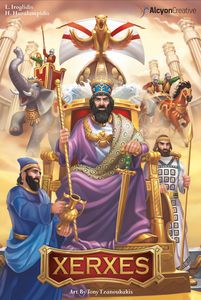 It's almost March already, and Kickstarter has several interesting projects running right now. Let's round a few of them up! 1. Xerxes From the publishers who brought you Argonauts comes Xerxes, in which you are playing a satrap trying to earn the most favor from the Persian king, Xerxes. It's a race for victory points, which you'll earn through effective resource management. Can you generate resources, build, and tax to be the first one to 25 points? The game includes solo tiles that allow you to pit yourself against an AI player, and you can adjust the level of difficulty for an easier or more challenging game. There are only a couple of days left in this campaign, so look fast! 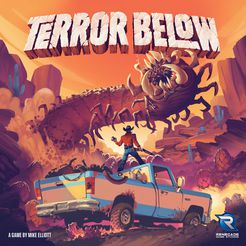 2. Terror Below Renegade Games is giving off a sci-fi/Western vibe with Terror Below, a game set in an alternate-universe Nevada desert that is infested with giant killer worms. Mostly it looks like a pick up and delivery game in which you transport worm eggs in exchange for bounties. But you can also acquire weapons and go hunting for the beasts. Like Xerxes above, this game is a race for victory points—first one to 20 wins. 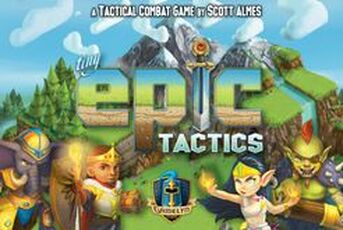 3. Tiny Epic Tactics This one is definitely tempting me. Tiny Epic Tactics looks a lot like Final Fantasy Tactics, which is a great thing in my book. Up to four players can battle it out for dominance over a 3-D map... or you can play a solo/cooperative game that involves exploring the terrain and defeating AI opponents. I really like that the game includes heroes with different powers, movements, and attack types. Plus, the price is right at $25 for the base game. (More if you want some expansions.) Although there is a solo playthrough up now, I am still interested in seeing some polished solo rules for this one before I commit. 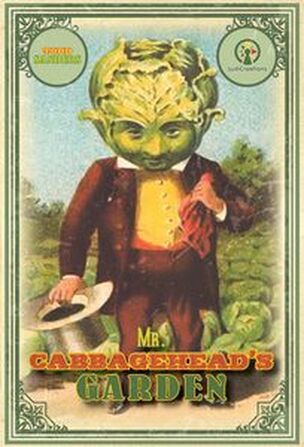 What is this game about? Mr. Cabbagehead's Garden, designed by Todd Sanders, is a game about growing the perfect vegetable garden. Success will net you both a blue ribbon and the heart of the lovely Eudora Brassica! What makes this premise especially interesting is that you do not only grow vegetables—you are one. And so are the irritating neighbors who sneak into your garden and steal from it every time you go on holiday! The most striking aspect of the game is its art, which was inspired by the images on vintage seed packets. Mechanically, Mr. Cabbagehead's Garden is simple. Each turn, you draft one of three vegetable cards and place it in your garden. At the end of the game, you will score based on the point values of your vegetables. You'll also get bonuses for managing to get your vegetables into specific arrangements. But there are a few touches of added complexity that make your choices more interesting. The vegetables you choose may require you to pay bees or receive bees from your beehive, adding a bit of economic balance to the proceedings. Also, the cards you leave behind will help to determine how many neighbor tokens you overturn. This is important because the neighbor with the most tokens when you go on holiday is the one who will come and steal from your garden (and each neighbor has individualized theft priorities). However, if the neighbors all tie for tokens, they get wrapped up in conversation with each other—and then leave your precious vegetables alone! How does it play solo? This game is technically for 1–2 players, but it's really a solo game and is best that way. 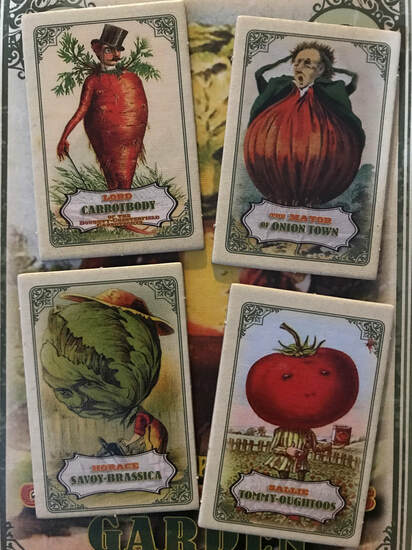 Two words: Tedious Neighbors. Two words: Tedious Neighbors. Overall Thoughts Mr. Cabbagehead's Garden is a very good light game. It's all about beating your own score, and sometimes you won't draw the right cards to score high. But there are score ranges to help you gauge how well you did, and since it is such a short game (10–15 min.), a bad score isn't a problem. Just shuffle up those veggie cards and play again! Trying to arrange your garden just so, only to have your plans foiled by an obnoxious neighbor, is a good blend of fun and frustrating. I have played Mr. Cabbagehead's Garden a lot and consistently had a good time. Mechanically, I might not call Mr. Cabbagehead's Garden thematic. It doesn't feel like planting vegetables, although it's fun to try to arrange the cards well. And yet the theme is delightful. It's the flavor text of this game that really sells it. The way the rulebook is written really gets you into Mr. Cabbagehead's quiet, pastoral life—a life that is filled with decorous love and genteel rage. The rulebook describes "The Neighbour Phase, when it is determined which of Mr. Cabbagehead’s Tedious Neighbours interferes with his quest for perfection." The neighbors have names like "Lord Carrotbody," and one of them, Horace Savoy-Brassica, "is jealous of Mr. Cabbagehead and his award-winning garden (not to mention annoyed at Mr. Cabbagehead’s romancing of his half-sister Eudora, President of the Garden Club)." Text like that, combined with the quirky seed packet art, adds so much charm to a game that might have been just a mathematical exercise. Do I recommend it? Yes. If you're looking for a quick, light game with a quirky theme, Mr. Cabbagehead's Garden is a great choice. Overall Rating: 4 stars Rating scale: 5 stars — I love it! 4 stars — I really like it. 3 stars — I like it. 2 stars — It's okay. 1 star — Meh.  Full disclosure: DVG sent me a review copy of Pavlov's House. What is this game about? Pavlov's House is a game of survival under brutal circumstances during the Battle of Stalingrad. The real Pavlov's House was a strategically-located apartment building that Russian soldiers—including the eponymous Pavlov—held for nearly two months against a relentless Nazi onslaught. In the game, you win by surviving all the way to the end of the German assault deck. But you can lose in a number of ways. You can be straight-up destroyed by German tanks, Nazi soldiers can reach Pavlov's House, you can lose all of your support from the army outside, or you can fail to feed your men and thus cause the death by starvation of all who live inside the apartment building. And even if you win, there is a pretty brutal victory point calculation to help you decide how well you won. Typically, you won't get a big win... if you win at all. Mechanically, Pavlov's House is very interesting. The game comes with a tripartite board, representing different levels of the conflict as the battle progresses. As the player, you'll control both the left and right sides of the board—Pavlov's House itself, and the Soviet 62nd Army outside that is trying to support it. The area in the middle of the board represents Nazi encroachment, and it's where you add enemy soldiers and tanks. As the Soviet 62nd Army, you'll be drawing cards and choosing how best to support Pavlov's House. You can work on gathering supplies, recruiting more soldiers, installing anti-aircraft guns, and more. Within Pavlov's House, you'll be using limited movements and activations to arrange soldiers inside the house and fight back the approaching Germans. When you get better at the basic game (haha good luck), you can add in tactics cards to make the Nazis more brutal, as well as operational support cards to give yourself extra challenges as the Russian army. 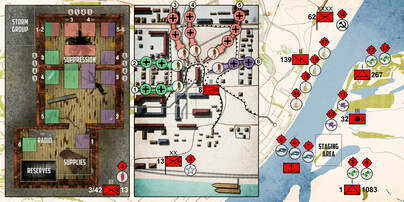 The three-part game board, from the PnP files on BGG. The three-part game board, from the PnP files on BGG. How does it play solo? Technically, you could play Pavlov's House with one, two, or three players. But it's definitely strongest with one—the AI is sufficiently brutal but also sufficiently low-upkeep, while controlling both Russian sides of the board gives you the correct amount of "things to do" for a satisfying gameplay experience. Overall Thoughts Pavlov's House is excellent. There are so many tense decisions to make, and you'll always be left wondering if you've made the right ones. What forms of outside support will you prioritize? Will you focus on getting food into Pavlov's House? Will you bulk up your communication channels to try to get extra actions on the next turn? Will you put all of your energy into anti-aircraft tokens? (I highly recommend heavy investment in anti-aircraft tokens.) And within Pavlov's House itself, you have to decide how you'll use limited movements and activations. Which enemies will you try to take out? What weapons will you use? Will you bring in additional soldiers, even without the guarantee that you can feed them all? Meanwhile, the Nazi approach is relentless. Stukas will blow up all of your outside support spaces (especially the ones you had especially big plans for), while tanks, riflemen, and scouts will creep up on all sides of your building and work to lower its defenses. When I play this game, I really do feel like I'm trapped in an apartment building and fighting for my life. While Pavlov's House is a thrilling and intense gaming experience, you should be aware that you may not enjoy it much if you hate having your fate decided by die rolls. You will roll dice constantly, both to represent Nazi attacks on your own forces and to determine whether your attempts to suppress German encroachment have been successful. Get ready to plan a strong defense and spend all of your anti-aircraft tokens, only to roll low and get bombed anyway. For me this generally just adds to the drama of the proceedings, but if that doesn't sound like your thing, think twice about this one. You'll also get the occasional draggy turn where you draw no interesting cards for the 62nd Army and/or have to spend your turn in Pavlov's House refreshing everyone rather than making progress. But for me, Pavlov's House is a current favorite that I expect will still be hitting my table a year from now and beyond. The gameplay is simple but tense, and it's riveting to watch the story of each game unfold. I backed the next game in this series, Castle Itter, on the strength of Pavlov's House, and I am excited about that one, too. Do I recommend it? Unless you are allergic to dice, I absolutely recommend Pavlov's House. It's brutal, historical, and engrossing. I am so glad I have a copy of this game. Overall Rating: 4.5 stars Rating scale: 5 stars — I love it! 4 stars — I really like it. 3 stars — I like it. 2 stars — It's okay. 1 star — Meh.  FYI: There have been two editions of Rescue Polar Bears. This review concerns the more recent one, Data & Temperature. What is this game about? Rescue Polar Bears: Data & Temperature is just what it says on the tin—a game about rescuing polar bears! You (and possibly fellow players) will control boats that sail around the arctic, collecting data about global warming while preventing adorable, adorable polar bears from drowning when the ice caps melt. While you can only win the game by picking up a specific number of data tokens, you can lose the game by failing to protect the bear population. You begin the game with a limited number of helicopters that can pick up bears that have fallen into the water. But if you need a helicopter and don't have one? Game over. Let's not dwell on the fact that a polar bear is dead and it's your fault. You can also lose the game if you end a turn with the temperature above 20 degrees. The bears themselves, of course, do not exactly behave according to plan. Despite their shrinking living space, the bears will attempt to reproduce each turn. Baby bears grow up, and adult couples pop out not one, but two bear cubs! Think Pandemic, except you want to save the disease cubes while also preventing them from multiplying too much. It's not an easy game, but Rescue Polar Bears does offer you a few helping hands. Each time you collect a certain number of data tokens, you can upgrade one of your boats, which may allow you to move further or pick up more bears. And if you land on certain hexes on the board, you can draw support cards that sometimes offer significant benefits. 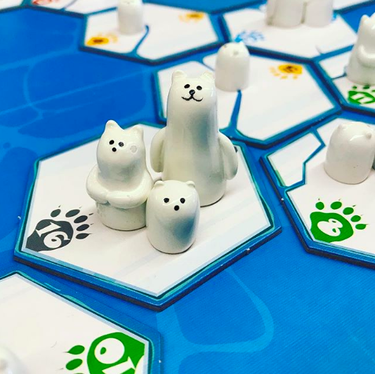 Cute. Overload. Cute. Overload. How does it play solo? Rescue Polar Bears is a cooperative game, but it can be played solo by controlling two or more boats. Gameplay is straightforward enough that it's no problem to play two-handed. Overall Thoughts Rescue Polar Bears has a unique theme and excellent production values that really shine. The bears are so adorable that it's impossible not to worry about them! When I played this game with students, we all got excited about saving bears and surprisingly upset when we had to helicopter them out of the water. This game is good fun solo, but it especially shines in a group because it is so engaging. The other huge benefit that Rescue Polar Bears has to offer is that it is extremely easy to teach, while still being a difficult game. You can't expect to win every time you play, and this adds plenty of drama and tension to the proceedings. But you can whip this game out with any play group, with any level of experience, and have a fantastic time. While Rescue Polar Bears has a very unusual theme, it does not feature equally surprising gameplay. The game works great, but it's mechanically very workmanlike. Don't expect a fresh take on cooperative games inspired by Pandemic. That said, this doesn't bother me at all—the game works so well, and it brings joy every time I pull it off the shelf. Do I recommend it? I definitely recommend it. Rescue Polar Bears is adorable, fun, and challenging enough to please a wide range of gamers. This one's a keeper. Overall Rating: 4 stars Rating Scale: 5 stars — I love it! 4 stars — I really like it. 3 stars — I like it. 2 stars — It's okay. 1 star — Meh. 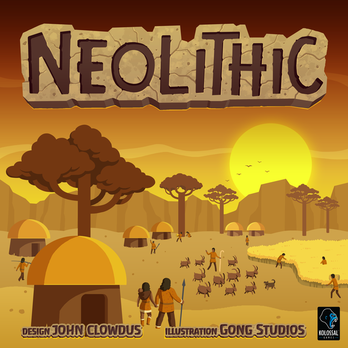 As always, there are several board games of interest to solo gamers on Kickstarter! Let's sample a few for the week! 1. The Clowdus Collection: Neolithic Kolossal Games is currently republishing a set of games designed by John Clowdus, including Merchants of Muziris, Keep, and Neolithic. Of the three, Neolithic has solo mode (it is for 1–2 players). In this game, your goal is to build up a neolithic Village. Mechanically, the game is a mixture of hand building, worker placement, and deployment of multi-use cards. At 30 minutes, it is also quick-playing, which should suit solo gamers who are looking for a quick work night game. 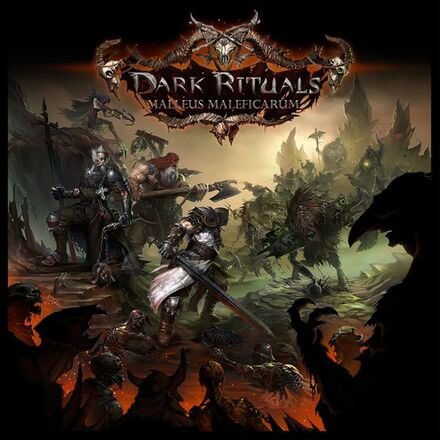 2. Dark Rituals: Malleus Maleficarum On the other end of the spectrum, Dark Rituals is a $100 big-box game packed with miniatures. This one is an asymmetric "one vs. all" game that also includes a solo mode. In the multiplayer version of the game, the heroes' goal is to defend a town from a coven of witches, while one player takes on the role of Witch Master. In solo mode, you are the Witch Master battling against game-controlled heroes—a potentially interesting twist, given that usually AI controls the overlord and makes the solo player pilot multiple heroes.  3. Parks: The Board Game Parks is actually a board game about hikers who are enjoying America's national parks and collecting memories of their experiences. You can improve your equipment to hike more efficiently, but your main goal will be to take the best collection of photographs. In the solo mode, you'll be sharing the trail with Rangers who are there to take care of the park. But while the Rangers are helpful and necessary to park upkeep, they will also act as your timer, because the season ends when they finish maintaining the trail! This game is committed to celebrating national parks, and some of its proceeds will be donated to the National Park Service. 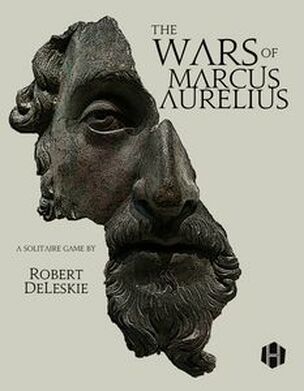 What is this game about? Wars of Marcus Aurelius, designed by Robert DeLeskie and published by Hollandspiele, is a light war game that simulates the Marcomannic Wars, which Marcus Aurelius waged for roughly the last 14 years of his life. Your job is to push three barbarian tribes—the Marcomanni, the Quadi, and the Iazyges—back to their home territory, and then defeat them on their own turf. If all three tribes are subdued at the beginning of an in-game year, then you win. However, if the Marcomanni reach Rome, you automatically lose. You can also lose the game by running out of "Imperium Points," in which case you are usurped because your own people think you are doing a bad job. And if the game draws out too long, you can lose by running out of time—the game begins in 170 CE and ends in 180, the year Marcus Aurelius died. If you haven't taken care of the barbarians by then, you don't win. The game itself is a fun mixture of risk taking and hand management. Each year, you will draw cards (fewer and fewer each season) that can be played for the events on them, or to execute certain in-game actions such as battling, building forts, or rearranging your legions. The barbarians will play cards of their own, which will either help them to advance across the Danube or force you to deal with problems such as plague, scandal at home (oh, Faustina!), and even conflicts on other fronts in the Empire. Battles are decided by a roll of the dice, and while you can prepare yourself strategically, only rarely can you guarantee victory. How does it play solo? Wars of Marcus Aurelius is a solitaire-only game. Enjoy being catered to! Overall Thoughts I truly enjoy Wars of Marcus Aurelius. As a Roman history enthusiast, I found a lot of little references in this game that made it extra fun. There are cards about Empress Faustina's scandals, about Marcus Aurelius's embarrassing obsession with Alexander of Abonoteichus, and about other historical figures and conflicts that were fun to see outside of the pages of a history book. This game's theme and its mechanics match up beautifully—you really do feel the frustration of making progress against the barbarians, only to have them regroup and return year after year. 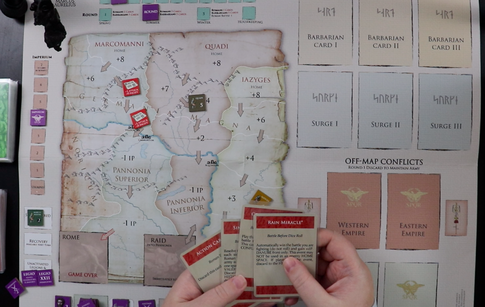 Decisions, decisions... Decisions, decisions... Gameplay in Wars of Marcus Aurelius is excellent. Choosing how to deploy your cards is always tense, especially when you need to get a lot done but also have a hand of cards filled with juicy special actions that you could take instead. It's crucial to build up forts and keep them in supply, but you will always have more immediate concerns, such as an advancing tribe or a dip in your Imperium Points. And on top of that, there are plenty of faraway conflicts to draw off your commanders and some of your legions. Even a pacified tribe will rebel again if you don't maintain your presence in their territory, so you are never truly safe on any front! I have minor quibbles with this game. After a few plays, I found myself following the same basic strategy every time—try to crush the Marcomanni as quickly as possible, then hold them down while cleaning up the other two tribes. A war on three fronts is just too much to sustain. There is also the occasional round that drags because you didn't pull great cards and the barbarians didn't do anything too spicy, either. But this is a war simulation, and it's not as though every season in a real war is going to be full of drama. And if you hate to be at the mercy of the dice, beware, because no matter how well you prepare, there will be situations when the dice are against you—or when you will draw the worst possible cards! All in all, I think Wars of Marcus Aurelius is a fantastic solo game. It is always engaging, it doesn't outstay its welcome (especially if you lose early... ouch), and it's the right weight for when I want a challenge but don't want to spend my entire evening on a single board game. Playing Wars of Marcus Aurelius has also gotten me interested in playing more and heavier war games, because it has been such a pleasant excursion into the genre. If you are looking to dip your toes in with a light war game, I can wholeheartedly recommend this one. Do I recommend it? Absolutely. Wars of Marcus Aurelius is becoming a go-to solo game for me, and I have really been racking up the plays. The tension as you draw barbarian cards, the agony of deciding what to do with your own hand, and the challenge of distributing your legions and leaders correctly doesn't get old. Overall rating: 4.5 (I will reassess in a year to see if this game is a true love of mine) Rating scale: 5 stars — I love it! 4 stars — I really like it. 3 stars — I like it. 2 stars — It's okay. 1 star — Meh. 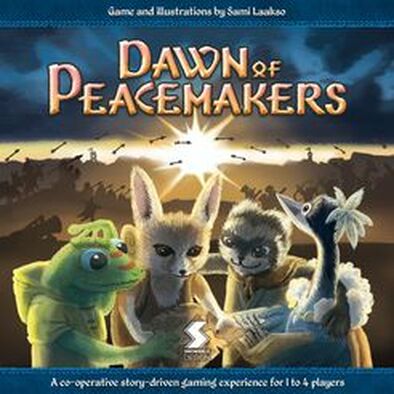 Full disclosure: I received a review copy of Dawn of Peacemakers from Snowdale Design. What is this game about? Dawn of Peacemakers, designed by Sami Laakso, is one of the most interesting games I have encountered in a long time. While most board games focus on fighting and winning battles, Dawn of Peacemakers is about deescalating armed conflict between opposing sides and bringing the hostilities to a halt. This game is a "green legacy" campaign with twelve different scenarios, and in most cases the main win condition is for both sides to mutually withdraw from the fight. In other words, your goal is to prevent both sides from winning, and to lead them to a frustrated stalemate. The opposing Macaw and Ocelot armies (with some later surprises!) are not, however, going to sit and listen to you. They have their own marching orders and will be controlled by AI decks that you cannot always influence. You can, however, play your own cards to the best possible effect. Each card in the game can be used for multiple purposes, so you can either take the action on the card or spend it for movement, fortification of locations on the map, or—most importantly—on influence. As you spend influence, you are able to peek at and reorder cards in enemy decks, which allows you to manipulate upcoming AI turns as effectively as possible. As the game progresses, new rules, terrain, goals, enemy units, and outcomes reveal themselves. This game definitely has some fun surprises in store! How does it play solo? Dawn of Peacemakers is a cooperative game that can also be played solo, i.e. with a single character and hand of cards. It works well either one- or two-handed. I personally prefer one-handed play so I can draw a bunch of cards and have one big hand of them to work with! Overall Thoughts Thematically, Dawn of Peacemakers is one of the most interesting games I have seen in a while. You are attempting to make peace, but even peacemaking is dirty work. In order to deescalate the conflict in each scenario, you need to decrease the motivation of each army—meaning that units have to die (well, technically, be "defeated," but this is a war we're talking about). They just have to die in ways that are most advantageous to you. Many of your own actions are pretty sneaky. You can weaken units you are staying with by poisoning their food, you are manipulating the orders of commanding officers, and you can literally move units into the line of fire so that they will die in the service of your ultimate goal. There is a lot of moral weight to this game, if you really think about it. Are your machinations right, even if they are in service of the greater good? Also, haven't your "friends" on both sides of the conflict realized that things seem to go haywire whenever you and your adventurer pals are around? This game is also mechanically fascinating. You have limited actions and resources, and you're doing your best to control the aggression of opposing armies who have their own ideas. It's a fascinating and frustrating experience. That said, get ready for a little bit of luckiness—sometimes you will not be able to get the right cards to come up in your favor, and you will lose a scenario. (The game accounts for this in various ways, so you can keep going, although with some penalties.) Alternatively, you can have occasional pacing issues when you need a specific card to appear in the AI deck, but have to wait a frustratingly long time for it to appear. The game also gets a bit finicky in later stages of the campaign, when there are almost too many new rules and mechanisms in play. None of those criticisms, however, make Dawn of Peacemakers less worthy of your time. If you want to play a game that is truly thought-provoking, as well as mechanically unlike games you have played before, then Dawn of Peacemakers might be for you. It is clear that a lot of love went into this game, as well, and the art and flavor text are engrossing. Do I recommend it? Yes. Dawn of Peacemakers doesn't offer the smoothest or snappiest gameplay of all time, but it's an engaging and unique experience. You shouldn't miss it if you are interested in board games that push the thematic envelope. Overall Rating: 4 stars 5 stars — I love it! 4 stars — I really like it. 3 stars — I like it. 2 stars — It's okay. 1 star — Meh. |
AuthorMy name is Liz Davidson, and I play solo board games. A lot of solo board games... Archives
August 2021
Categories
All
|
 RSS Feed
RSS Feed